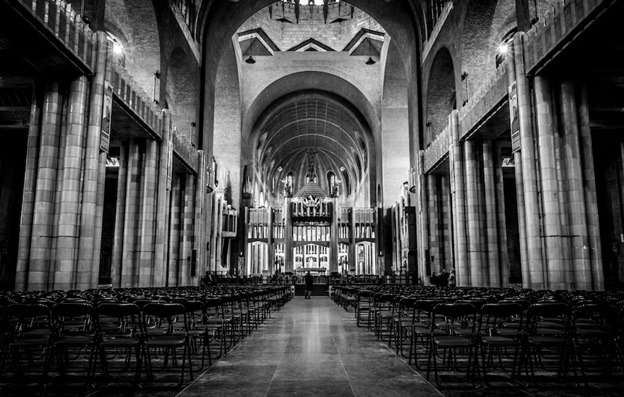What is your church seating capacity? First, you must consider the seating capacity limit set by the fire department. Many fire departments will calculate the interior space of your church, fire exits, and other factors to calculate seating capacity. However, you can also do many of the calculations yourself.
Calculate maximum capacity
Maximum seating capacity is not something you want to reach on a daily basis. The main issue is that the fire department may say that you can fit 300 people in the space, but this doesn’t mean it’s going to be comfortable.
Instead, you likely want to remain 5% – 10% under this figure – or more.
Why?
It’s going to be safer for congregation members and far more comfortable. Some churches will aim for 75% capacity as their maximum.
Determine seating capacity
Worship area seating capacity is difficult to assess without knowing the exact dimensions of your space.
- First, determine the maximum amount of square footage your worship space offers
- Allot 10 – 15 feet per person in the space
For example, let’s assume that you have 3,000 square feet of worshipping space. In this case, you would divide 3,000 by 10 for a maximum amount of 300 people in the space. You may also divide this number by 15 to find the lower end of 200 people.
Coming somewhere in the middle at 250 will provide a comfortable seating area for your guests. You can even go up to 20 feet per person if the room allows.
Worship areas demand a lot of space because you’ll have a seating area for your members as well as aisles that allow them to safely walk to their chairs.
It’s also important to note that the seating capacity is solely for the worship area. You may have more seating options in other spaces.
Note: You should always use your own calculations while adhering to the maximum occupancy amount allowed by law.
Consider using chairs instead of pews
A church that fits our needs may or may not use pews. For centuries, pews were the go-to seating option in churches. Durable and long-lasting, pews made sense for the massive churches at the time. However, many congregations are transitioning to chairs because they make more sense.
Chairs offer you the option to:
- Easily remove the chairs from the space in a way that is difficult with long, heavy pews
- Rearrange the chairs effortlessly to meet the needs of a growing congregation
- Creating event rooms for prayer groups, teaching, and events
The church chairs of today come in a wide range of widths and heights to fit members of all sizes. Older congregation members who have difficulty standing up from lower chairs will appreciate a section with higher chairs.
Also, chairs allow for more arrangement freedom, such as;
- Linking the chairs together to create a “pew” of chairs for members;
- Stacking the chairs to save storage room;
- Add or remove chairs as the congregation demands;
Depending on the chair’s manufacturer, there are also a lot of accessory options in chairs that are overlooked, such as attachable kneelers, stacking racks, cup holders, and more. With the use of chair accessories, it’s possible to create a functional space that truly works for your congregation.
Consider safety and comfort
Church capacity cannot overlook safety and comfort. There’s a reason for maximum seating: safety. However, many congregations try and squeeze every last chair in the church without considering:
- The comfort of interlinking the chairs and having 20 in a row;
- Overcrowding and the heat production of many people in a small space;
- Easy access to rows and potential exits if an emergency breaks out;
You need to consider all of these comfort and safety items. However, there is also safety built into the chair itself, which is something that you need to consider as well.
For example, worship chairs by ComforTek have a lot of safety options built in, such as:
- CAL 117
- ANSI / BIFMA approval
- CAL 133
You can and should inquire with the manufacturer to learn what type of testing their chairs have undergone.
In conclusion
Once you’ve done all of the calculations and considered pews vs chairs, you can finally move on to your purchase. A lot of manufacturers will be willing to help you secure seating for your congregation.

